| ||||||||||||||||||||||||||||||||||||||||||||||||
CURATOR INDEX
|
|
in stock $65.00 Free Shipping UPS GROUND IN THE CONTINENTAL U.S. |
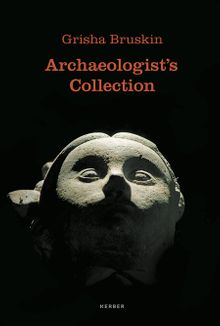 Grisha Bruskin: Archaeologistís Collection
Grisha Bruskin: Archaeologistís Collection
Published by Kerber.
Edited by Patricia Donegan. Text by Shalva Breus, Grisha Bruskin, Boris Groys, Mikhail Jampolsky.
PUBLISHER
Kerber
BOOK FORMAT
Clth, 6.5 x 9.5 in. / 208 pgs / 126 color / 60 bw.
PUBLISHING STATUS
Pub Date 3/31/2014
Out of print
DISTRIBUTION
D.A.P. Exclusive
Catalog: SPRING 2014 p. 178
PRODUCT DETAILS
ISBN 9783866788831 FLAT40
List Price: $45.00 CAD $60.00
AVAILABILITY
Not available
STATUS: Out of print | 00/00/00 For assistance locating a copy, please see our list of recommended out of print specialists |
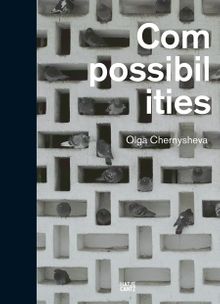 Olga Chernysheva: Compossibilities
Olga Chernysheva: Compossibilities
Published by Hatje Cantz.
Text by Boris Groys, Silke Opitz.
PUBLISHER
Hatje Cantz
BOOK FORMAT
Clth, 6.75 x 9.5 in. / 216 pgs / 120 color.
PUBLISHING STATUS
Pub Date 12/31/2013
Out of stock indefinitely
DISTRIBUTION
D.A.P. Exclusive
Catalog: FALL 2013 p. 177
PRODUCT DETAILS
ISBN 9783775736527 FLAT40
List Price: $55.00 CAD $72.50
AVAILABILITY
Not available
STATUS: Out of stock indefinitely. |
 Boris Mikhailov: Books
Boris Mikhailov: Books
Published by Walther König, Köln.
Edited by Inka Schube. Text by Oksana Bulgakowa, Boris Groys, Helen Petrovsky, Inka Schube, Bernd Stiegler, Tobias Wilke.
PUBLISHER
Walther König, Köln
BOOK FORMAT
Hardcover, 9 x 12 in. / 336 pgs / 270 color.
PUBLISHING STATUS
Pub Date 9/30/2013
Active
DISTRIBUTION
D.A.P. Exclusive
Catalog: FALL 2013 p. 96
PRODUCT DETAILS
ISBN 9783863353032 TRADE
List Price: $59.95 CAD $79.00
AVAILABILITY
In stock
in stock $59.95 Free Shipping UPS GROUND IN THE CONTINENTAL U.S. |
 When Attitudes Become Form
When Attitudes Become Form
Bern 1969/Venice 2013
Published by Fondazione Prada.
Edited by Germano Celant. Introduction by Miuccia Prada. Preface by Miuccia Prada, Patrizio Bertelli. Text by Gwen L. Allen, Pierre Bal Blanc, Claire Bishop, Benjamin H.D. Buchloh, Charles Esche, Boris Groys, Jens Hoffmann, Chus Martínez, Glenn Phillips, Christian Rattemeyer, Dieter Roelstraete, Anne Rorimer, Terry Smith, Mary Anne Staniszewski, Francesco Stocchi, Jan Verwoert. Interviews with Thomas Demand, Rem Koolhaas.
PUBLISHER
Fondazione Prada
BOOK FORMAT
Clth, 8.75 x 11.5 in. / 700 pgs / illustrated throughout.
PUBLISHING STATUS
Pub Date 9/30/2013
Out of print
DISTRIBUTION
D.A.P. Exclusive
Catalog: SPRING 2014 p. 147
PRODUCT DETAILS
ISBN 9788887029550 SDNR30
List Price: $120.00 CAD $160.00
AVAILABILITY
Not available
STATUS: Out of print | 00/00/00 For assistance locating a copy, please see our list of recommended out of print specialists |
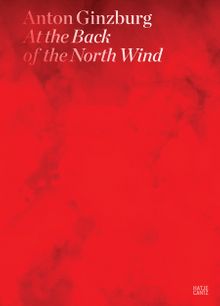 Anton Ginzburg: At the Back of the North Wind
Anton Ginzburg: At the Back of the North Wind
Published by Hatje Cantz.
Text by by Jeffrey Kastner, Boris Groys. Conversation with Boris Groys.
PUBLISHER
Hatje Cantz
BOOK FORMAT
Clth, 8.25 x 11.25 in. / 200 pgs / 310 color / 30 bw.
PUBLISHING STATUS
Pub Date 2/28/2013
Out of stock indefinitely
DISTRIBUTION
D.A.P. Exclusive
Catalog: SPRING 2013 p. 184
PRODUCT DETAILS
ISBN 9783775734295 TRADE
List Price: $75.00 CAD $99.00
AVAILABILITY
Not available
STATUS: Out of stock indefinitely. |
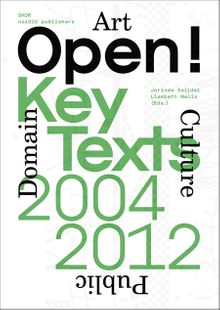 Open! Key Texts, 2004-2012
Open! Key Texts, 2004-2012
Art, Culture & the Public Domain
Published by nai010 publishers.
Text by Wolfgang Ernst, Brian Holmes, Boris Groys, Sven Lütticken, Saskia Sassen, Jonathan Sassen, Stephan Wright, et al.
PUBLISHER
nai010 publishers
BOOK FORMAT
Paperback, 6.75 x 9.5 in. / 260 pgs / illustrated throughout.
PUBLISHING STATUS
Pub Date 3/31/2013
Out of print
DISTRIBUTION
D.A.P. Exclusive
Catalog: SPRING 2013 p. 140
PRODUCT DETAILS
ISBN 9789462080034 FLAT40
List Price: $40.00 CAD $50.00
AVAILABILITY
Not available
STATUS: Out of print | 00/00/00 For assistance locating a copy, please see our list of recommended out of print specialists |
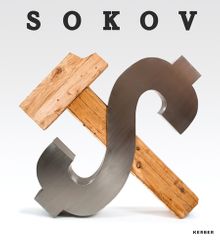 Leonid Sokov: Sculpture, Painting, Objects, Installations, Documents, Articles
Leonid Sokov: Sculpture, Painting, Objects, Installations, Documents, Articles
Published by Kerber.
Edited by Leonid Sokov. Text by Andrei Erofeev, Boris Groys, Leonid Sokov, Julia Tulovsky.
PUBLISHER
Kerber
BOOK FORMAT
Hardcover, 10 x 11 in. / 184 pgs / 153 color / 5 bw.
PUBLISHING STATUS
Pub Date 9/30/2013
Out of print
DISTRIBUTION
D.A.P. Exclusive
Catalog: FALL 2013 p. 180
PRODUCT DETAILS
ISBN 9783866787612 FLAT40
List Price: $55.00 CAD $72.50
AVAILABILITY
Not available
STATUS: Out of print | 00/00/00 For assistance locating a copy, please see our list of recommended out of print specialists |
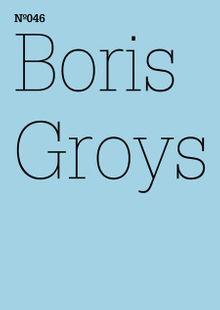 Boris Groys: Google, Words beyond Grammar
Boris Groys: Google, Words beyond Grammar
100 Notes, 100 Thoughts: Documenta Series 046
Published by Hatje Cantz.
PUBLISHER
Hatje Cantz
BOOK FORMAT
Paperback, 4.25 x 5.75 in. / 36 pgs / 2 color.
PUBLISHING STATUS
Pub Date 4/30/2012
Out of print
DISTRIBUTION
D.A.P. Exclusive
Catalog: SPRING 2012 p. 107
PRODUCT DETAILS
ISBN 9783775728959 TRADE
List Price: $10.00 CAD $14.95
AVAILABILITY
Not available
STATUS: Out of print | 00/00/00 For assistance locating a copy, please see our list of recommended out of print specialists |
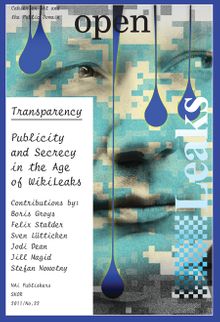 Open 22: Transparency
Open 22: Transparency
Publicity and Secrecy in the Age of Wiki Leaks
Published by nai010 publishers.
Edited by Jorinde Seijdel, Liesbeth Melis. Contributions by Sven Lütticken, Boris Groys, Felix Stalder, Jodi Dean, Jill Magid, Stefan Nowotny, Geert Lovink.
PUBLISHER
nai010 publishers
BOOK FORMAT
Paperback, 6.75 x 9.5 in. / 176 pgs / 40 color / 40 bw.
PUBLISHING STATUS
Pub Date 2/29/2012
Out of stock indefinitely
DISTRIBUTION
D.A.P. Exclusive
Catalog: SPRING 2012 p. 130
PRODUCT DETAILS
ISBN 9789056628390 FLAT40
List Price: $30.00 CAD $40.00
AVAILABILITY
Not available
STATUS: Out of stock indefinitely. |
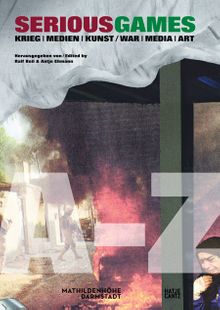 Serious Games
Serious Games
War-Media-Art
Published by Hatje Cantz.
Edited by Ralf Beil, Antje Ehmann. Text by Paul Virilio, Harun Farocki, Boris Groys.
PUBLISHER
Hatje Cantz
BOOK FORMAT
Hardcover, 6.75 x 9.5 in. / 208 pgs / 194 color.
PUBLISHING STATUS
Pub Date 8/31/2011
Out of print
DISTRIBUTION
D.A.P. Exclusive
Catalog: FALL 2011 p. 156
PRODUCT DETAILS
ISBN 9783775729918 SDNR30
List Price: $45.00 CAD $55.00
AVAILABILITY
Not available
STATUS: Out of print | 00/00/00 For assistance locating a copy, please see our list of recommended out of print specialists |
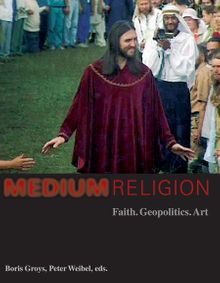 Medium Religion
Medium Religion
Faith, Geopolitics, Art
Published by Walther König, Köln.
Text by Boris Groys, Peter Weibel.
PUBLISHER
Walther König, Köln
BOOK FORMAT
Paperback, 8.5 x 10 in. / 230 pgs / 250 color / 30 bw.
PUBLISHING STATUS
Pub Date 6/30/2011
Active
DISTRIBUTION
D.A.P. Exclusive
Catalog: FALL 2009 p. 90
PRODUCT DETAILS
ISBN 9783865606044 TRADE
List Price: $46.00 CAD $62.50
AVAILABILITY
In stock
in stock $46.00 Free Shipping UPS GROUND IN THE CONTINENTAL U.S. |
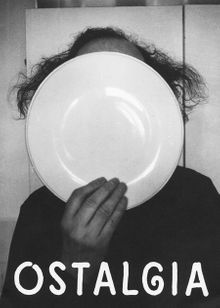 Ostalgia
Ostalgia
Published by New Museum.
Edited by Jarrett Gregory, Sarah Valdez. Forward by Lisa Philips. Text by Massimiliano Gioni, Ekaterina Degot, Victor Misiano, Joanna Mytkowska, Bojana Pejic, Boris Groys. Interview by Judy Ditner.
PUBLISHER
New Museum
BOOK FORMAT
Paperback, 8.25 x 11.5 in. / 120 pgs / 22 color / 90 bw.
PUBLISHING STATUS
Pub Date 9/30/2011
Out of stock indefinitely
DISTRIBUTION
D.A.P. Exclusive
Catalog: SPRING 2012 p. 102
PRODUCT DETAILS
ISBN 9780915557967 TRADE
List Price: $35.00 CAD $47.50 GBP £30.00
AVAILABILITY
Not available
STATUS: Out of stock indefinitely. |
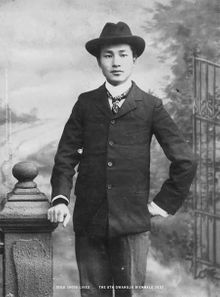 The 8th Gwangju Biennale: 10000 Lives
The 8th Gwangju Biennale: 10000 Lives
Published by The Gwangju Biennale Foundation.
Edited by Massimiliano Gioni and Judy Ditner. Essays by Ariella Azoulay, André Bazin, Régis Debray, David Freedberg, Jong-Gil Gim, Boris Groys, W. J.T. Mitchell, Masahiro Mori, Seth Price, Hito Steyerl.
PUBLISHER
The Gwangju Biennale Foundation
BOOK FORMAT
Paperback, 7 x 10 in. / 560 pgs / illustrated throughout.
PUBLISHING STATUS
Pub Date 12/31/2010
Out of print
DISTRIBUTION
D.A.P. Exclusive
Catalog: FALL 2010 p. 143
PRODUCT DETAILS
ISBN 9788987719122 TRADE
List Price: $50.00 CAD $60.00
AVAILABILITY
Not available
STATUS: Out of print | 00/00/00 For assistance locating a copy, please see our list of recommended out of print specialists |
 Francis Alÿs: A Story of Deception
Francis Alÿs: A Story of Deception
Published by The Museum of Modern Art, New York.
Edited by Mark Godfrey, Klaus Biesenbach. Text by Eduardo Abaroa, Klaus Biesenbach, Francesco Careri, Carla Faesler, Mark Godfrey, Boris Groys, Miwon Kwon, Tom McDonough, Cuauhtémoc Medina, Laymert Garcia dos Santos, Eyal Weizman.
PUBLISHER
The Museum of Modern Art, New York
BOOK FORMAT
Paperback, 7.5 x 9.5 in. / 192 pgs / 132 color.
PUBLISHING STATUS
Pub Date 8/31/2010
Out of stock indefinitely
DISTRIBUTION
D.A.P. Exclusive
Catalog: FALL 2010 p. 89
PRODUCT DETAILS
ISBN 9780870707902 TRADE
List Price: $35.00 CAD $47.50
AVAILABILITY
Not available
STATUS: Out of stock indefinitely. |
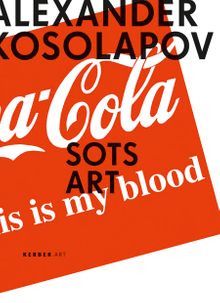 Alexander Kosolapov: Sots Art
Alexander Kosolapov: Sots Art
Published by Kerber.
Text by Boris Groys, Alexander Borovsky, Lyudmila Novikova.
PUBLISHER
Kerber
BOOK FORMAT
Hardcover, 8.75 x 12.25 in. / 184 pgs / 99 color / 12 bw.
PUBLISHING STATUS
Pub Date 6/30/2010
Out of print
DISTRIBUTION
D.A.P. Exclusive
Catalog: SPRING 2010 p. 133
PRODUCT DETAILS
ISBN 9783866782273 TRADE
List Price: $55.00 CAD $72.50
AVAILABILITY
Not available
STATUS: Out of print | 00/00/00 For assistance locating a copy, please see our list of recommended out of print specialists |
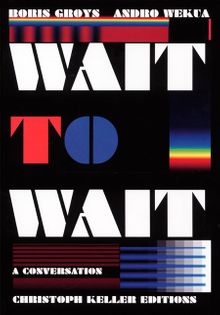 Boris Groys & Andro Wekua: Wait to Wait
Boris Groys & Andro Wekua: Wait to Wait
Published by JRP|Ringier.
Edited by Christoph Keller.
PUBLISHER
JRP|Ringier
BOOK FORMAT
Clth 5.25 x 7.75 in. / 160 pgs / illustrated throughout.
PUBLISHING STATUS
Pub Date 8/31/2009
Out of print
DISTRIBUTION
D.A.P. Exclusive
Catalog: FALL 2009 p. 90
PRODUCT DETAILS
ISBN 9783037640210 TRADE
List Price: $28.00 CAD $38.50
AVAILABILITY
Not available
STATUS: Out of print | 00/00/00 For assistance locating a copy, please see our list of recommended out of print specialists |
 Boris Groys: Thinking in Loop
Boris Groys: Thinking in Loop
Three Videos on Iconoclasm, Ritual and Immortality
Published by Hatje Cantz.
Boris Groys, Global Professor at New York University, is a philosopher, essayist, art critic, media theorist and an internationally acclaimed expert on late-Soviet Postmodern art and literature, as well as on the Russian avant-garde. Dr. Groys' writing engages the wildly disparate traditions of French Poststructuralism and Modern Russian philosophy.
PUBLISHER
Hatje Cantz
BOOK FORMAT
DVD (PAL & NTSC), 5.5 x 7.5 in.
PUBLISHING STATUS
Pub Date 2/1/2009
Out of print
DISTRIBUTION
D.A.P. Exclusive
Catalog: SPRING 2009 p. 90
PRODUCT DETAILS
ISBN 9783775723374 TRADE
List Price: $40.00 CAD $50.00
AVAILABILITY
Not available
STATUS: Out of print | 5/18/2011 For assistance locating a copy, please see our list of recommended out of print specialists |
 Ilya Kabakov: Catalogue Raisonné Paintings 1957-2008
Ilya Kabakov: Catalogue Raisonné Paintings 1957-2008
Published by Kerber.
Edited by Renate Petzinger. Text by Boris Groys, Robert Storr.
Ilya Kabokov was born in 1933 in Dnepropetrovsk, Russia, and immigrated to the U.S. in 1988. Kabokov is a contemporary of other "unofficial" Russian artists like Komar & Melamid--who also immigrated to the U.S.--and Oleg Vassilyev and Ivan Chuikov, who remained.
PUBLISHER
Kerber
BOOK FORMAT
Slip, Hardcover, 2 vols, 9.25 x 12 in. / 816 pgs / 670 color / 60 bw.
PUBLISHING STATUS
Pub Date 3/1/2009
Out of print
DISTRIBUTION
D.A.P. Exclusive
Catalog: SPRING 2009 p. 50
PRODUCT DETAILS
ISBN 9783866781733 TRADE
List Price: $195.00 CAD $240.00
AVAILABILITY
Not available
STATUS: Out of print | 00/00/00 For assistance locating a copy, please see our list of recommended out of print specialists |
 Open 16: The Art Biennial as a Global Phenomenon
Open 16: The Art Biennial as a Global Phenomenon
Published by nai010 publishers.
Edited by Maria Hlavajova, Thierry de Duve, Chantal Mouffe, Molly Nesbit, Boris Groys, Michael Hardt, Irit Rogoff.
PUBLISHER
nai010 publishers
BOOK FORMAT
Paperback, 6.75 x 9 in. / 112 pgs / illustrated throughout.
PUBLISHING STATUS
Pub Date 10/31/2009
Out of print
DISTRIBUTION
D.A.P. Exclusive
Catalog: SPRING 2009 p. 125
PRODUCT DETAILS
ISBN 9789056626679 FLAT40
List Price: $30.00 CAD $40.00
AVAILABILITY
Not available
STATUS: Out of print | 00/00/00 For assistance locating a copy, please see our list of recommended out of print specialists |
 Total Enlightenment
Total Enlightenment
Moscow 1960-1990
Published by Hatje Cantz.
Edited and with text by Boris Groys, Max Hollein.
PUBLISHER
Hatje Cantz
BOOK FORMAT
Hardback, 6.5 x 9.25 in. / 423 pgs / 100 color.
PUBLISHING STATUS
Pub Date 9/1/2008
Out of print
DISTRIBUTION
D.A.P. Exclusive
Catalog: FALL 2008 p. 153
PRODUCT DETAILS
ISBN 9783775721240 TRADE
List Price: $60.00 CAD $70.00
AVAILABILITY
Not available
STATUS: Out of print | 11/28/2010 For assistance locating a copy, please see our list of recommended out of print specialists |
 Nina Fischer & Maroan El Sani: Blind Spots
Nina Fischer & Maroan El Sani: Blind Spots
Published by JRP|Ringier.
Text by Gabriele Knapstein, Nicolas Trembley, Jennifer Allen, Boris Groys.
PUBLISHER
JRP|Ringier
BOOK FORMAT
Paperback, 8.25 x 11.25 in. / 200 pgs / 80 color / 20 bw.
PUBLISHING STATUS
Pub Date 6/1/2008
Out of print
DISTRIBUTION
D.A.P. Exclusive
Catalog: SPRING 2008 p. 174
PRODUCT DETAILS
ISBN 9783905829181 TRADE
List Price: $25.00 CAD $34.50
AVAILABILITY
Not available
STATUS: Out of print | 00/00/00 For assistance locating a copy, please see our list of recommended out of print specialists |
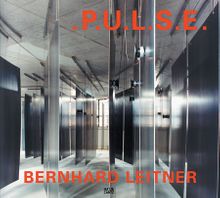 Bernhard Leitner
Bernhard Leitner
P.U.L.S.E.
Published by Hatje Cantz.
Text by Boris Groys, Bernhard Leitner.
PUBLISHER
Hatje Cantz
BOOK FORMAT
Hardback, 11.5 x 10.25 in. / 208 pgs / 116 color / DVD (PAL).
PUBLISHING STATUS
Pub Date 2/1/2008
Out of print
DISTRIBUTION
D.A.P. Exclusive
Catalog: SPRING 2008 p. 156
PRODUCT DETAILS
ISBN 9783775720472 SDNR30
List Price: $60.00 CAD $70.00
AVAILABILITY
Not available
STATUS: Out of print | 00/00/00 For assistance locating a copy, please see our list of recommended out of print specialists |
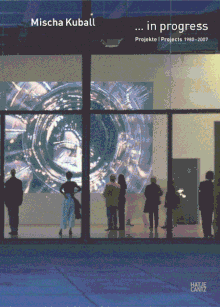 Mischa Kuball: In Progress Projects
Mischa Kuball: In Progress Projects
1980-2007
Published by Hatje Cantz.
Edited by Florian Matzner. Text by Boris Groys, Peter Weibel, Armin Zweite, Peter Sloterdijk, et. al.
PUBLISHER
Hatje Cantz
BOOK FORMAT
Hardcover, 8.5 x 11.75 in. / 408 pgs / 136 color / 117 bw.
PUBLISHING STATUS
Pub Date 6/1/2007
Out of print
DISTRIBUTION
D.A.P. Exclusive
Catalog: FALL 2007 p. 131
PRODUCT DETAILS
ISBN 9783775719261 TRADE
List Price: $65.00 CAD $75.00
AVAILABILITY
Not available
STATUS: Out of print | 11/28/2010 For assistance locating a copy, please see our list of recommended out of print specialists |
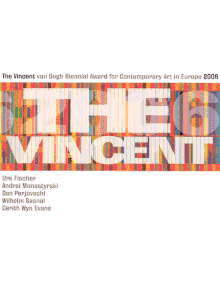 The Vincent 2006
The Vincent 2006
Published by Veenman Publishers.
Text by Michael Zeeman, Boris Groys, Marius Babias, James Tierney, Martin Prinzhorn.
PUBLISHER
Veenman Publishers
BOOK FORMAT
Paperback, 8.75 x 11 in. / 100 pgs.
PUBLISHING STATUS
Pub Date 3/1/2007
No longer our product
DISTRIBUTION
D.A.P. Exclusive
Catalog: SPRING 2007 p. 166
PRODUCT DETAILS
ISBN 9789086900312 TRADE
List Price: $32.00 CAD $40.00
AVAILABILITY
Not available
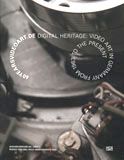 40 years Videoart.de
40 years Videoart.de
Digital Heritage: Video Art in Germany from 1963 to the Present
Published by Hatje Cantz.
Edited by Rudolf Frieling and Wulf Herzogenrath. Essays by Dieter Daniels, Boris Groys and Hans Dieter Huber.
PUBLISHER
Hatje Cantz
BOOK FORMAT
Hardcover, 7.5 x 9.75 in. / 400 pgs / 350 color.
PUBLISHING STATUS
Pub Date 6/1/2006
Out of print
DISTRIBUTION
D.A.P. Exclusive
Catalog: SPRING 2006 p. 137
PRODUCT DETAILS
ISBN 9783775717182 TRADE
List Price: $48.00 CAD $60.00
AVAILABILITY
Not available
STATUS: Out of print | 00/00/00 For assistance locating a copy, please see our list of recommended out of print specialists |
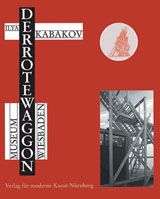 Ilya Kabakov: The Red Wagon
Ilya Kabakov: The Red Wagon
Published by Moderne Kunst Nürnberg.
Edited by Volker Rattemeyer. Essays by Boris Groys, Jürgen Harten and Renate Petzinger.
PUBLISHER
Moderne Kunst Nürnberg
BOOK FORMAT
Hardcover, 9.5 x 11.5 in. / 158 pgs / 43 color / 104 bw.
PUBLISHING STATUS
Pub Date 3/15/2005
Out of print
DISTRIBUTION
D.A.P. Exclusive
Catalog: SPRING 2005 p. 149
PRODUCT DETAILS
ISBN 9783933096258 TRADE
List Price: $55.00 CAD $65.00
AVAILABILITY
Not available
STATUS: Out of print | 5/26/2013 For assistance locating a copy, please see our list of recommended out of print specialists |
 My Private Heroes
My Private Heroes
Published by Kerber.
Edited by Jan Hoet. Essays by Anne Marie Bonnet, Boris Groys and Jan Hoet.
PUBLISHER
Kerber
BOOK FORMAT
Hardcover, 9.5 x 12 in. / 288 pgs / 150 color.
PUBLISHING STATUS
Pub Date 8/15/2005
Out of print
DISTRIBUTION
D.A.P. Exclusive
Catalog: FALL 2005 p. 159
PRODUCT DETAILS
ISBN 9783938025123 TRADE
List Price: $44.00 CAD $55.00
AVAILABILITY
Not available
STATUS: Out of print | 00/00/00 For assistance locating a copy, please see our list of recommended out of print specialists |
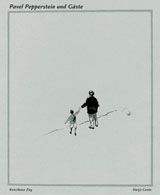 Pavel Pepperstein And Guests
Pavel Pepperstein And Guests
Published by Hatje Cantz.
Edited by Matthias Haldemann. Essays by Boris Groys, Ilya Kabakov, and Viktor Mazin.
PUBLISHER
Hatje Cantz
BOOK FORMAT
Hardcover, 9 x 11 in. / 176 pgs / 90 color.
PUBLISHING STATUS
Pub Date 8/2/2004
Out of print
DISTRIBUTION
D.A.P. Exclusive
Catalog: FALL 2004
PRODUCT DETAILS
ISBN 9783775714136 TRADE
List Price: $35.00 CAD $40.00
AVAILABILITY
Not available
STATUS: Out of print | 8/1/2007 For assistance locating a copy, please see our list of recommended out of print specialists |
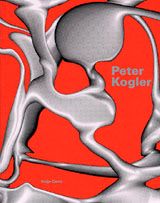 Peter Kogler
Peter Kogler
Published by Hatje Cantz.
Edited by Stephan Berg. Essay by Boris Groys.
PUBLISHER
Hatje Cantz
BOOK FORMAT
Paperback, 9 x 11.5 in. / 192 pgs / 100 color / 20 bw.
PUBLISHING STATUS
Pub Date 7/2/2004
Out of print
DISTRIBUTION
D.A.P. Exclusive
Catalog: FALL 2004
PRODUCT DETAILS
ISBN 9783775714228 TRADE
List Price: $45.00 CAD $55.00
AVAILABILITY
Not available
STATUS: Out of print | 1/1/2007 For assistance locating a copy, please see our list of recommended out of print specialists |
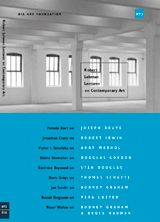 Robert Lehman Lectures On Contemporary Art No. 3
Robert Lehman Lectures On Contemporary Art No. 3
Published by Dia Art Foundation.
Edited by Lynne Cooke, Karen Kelly, Bettina Funcke. Essays by Lynne Cooke, Jonathan Crary, Russel Fergusson, Boris Groys, Pamela Kort, Bérènice Reynaud, Victor Stoichita, Elaine Showalter, Jan Tumlir and Peter Wollen. Foreword by Michael Govan.
PUBLISHER
Dia Art Foundation
BOOK FORMAT
Paperback, 5.5 x 8 in. / 200 pgs / 18 color / 100 bw.
PUBLISHING STATUS
Pub Date 7/2/2004
Active
DISTRIBUTION
D.A.P. Exclusive
Catalog: SPRING 2004
PRODUCT DETAILS
ISBN 9780944521779 TRADE
List Price: $16.95 CAD $24.00 GBP £14.99
AVAILABILITY
Out of stock
STATUS: Out of stock Temporarily out of stock pending additional inventory. |
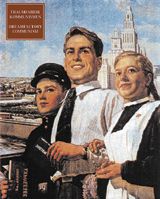 Dream Factory Communism
Dream Factory Communism
The Visual Culture of the Stalin Period
Published by Hatje Cantz.
Essays by Boris Groys, Oksana Bulgakova, Katya Djogot, Hans Günter, Annette Michelson, Alexander Morosov and Martina Weinhart Introduction by Max Hollein.
PUBLISHER
Hatje Cantz
BOOK FORMAT
Hardcover, 9 x 11 in. / 464 pgs / 144 color / 55 bw
PUBLISHING STATUS
Pub Date 12/2/2003
Out of print
DISTRIBUTION
D.A.P. Exclusive
Catalog: FALL 2003
PRODUCT DETAILS
ISBN 9783775713283 TRADE
List Price: $55.00 CAD $65.00
AVAILABILITY
Not available
STATUS: Out of print | 12/19/2005 For assistance locating a copy, please see our list of recommended out of print specialists |
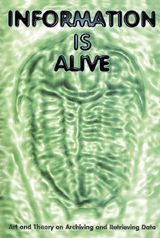 Information Is Alive
Information Is Alive
Art And Theory On Archiving And Retrieving Data
Published by nai010 publishers.
Edited by Joke Brouwer and Arjen Mulder. Essays by Manuel de Landa, Boris Groys, Winy Maas, Brian Massumi, Sadie Plant, Arjun Appadurai, Scott Lash, Simon Conway Morris, Antonio Damasio, George Dyson, Ryszard Kapuscinski and Ingo Günter.
PUBLISHER
nai010 publishers
BOOK FORMAT
Paperback, 6.5 x 9 in. / 192 pgs / 192 color.
PUBLISHING STATUS
Pub Date 7/2/2003
Out of print
DISTRIBUTION
D.A.P. Exclusive
Catalog: FALL 2003
PRODUCT DETAILS
ISBN 9789056623104 TRADE
List Price: $24.95 CAD $27.50
AVAILABILITY
Not available
STATUS: Out of print | 4/1/2008 For assistance locating a copy, please see our list of recommended out of print specialists |
 Imagine You Are Standing Here In Front Of Me
Imagine You Are Standing Here In Front Of Me
Caldic Collectie
Published by nai010 publishers.
Edited by Jaap Guldemond, Sven Lütticken. Contributions by Brooke Alexander. Text by Jannet de Goede, Boris Groys.
PUBLISHER
nai010 publishers
BOOK FORMAT
Hardcover, 8.75 x 11.75 in. / 256 pgs / 260 color.
PUBLISHING STATUS
Pub Date 3/2/2003
Out of print
DISTRIBUTION
D.A.P. Exclusive
Catalog: SPRING 2003
PRODUCT DETAILS
ISBN 9789056622886 TRADE
List Price: $39.95 CAD $50.00
AVAILABILITY
Not available
STATUS: Out of print | 11/15/2006 For assistance locating a copy, please see our list of recommended out of print specialists |
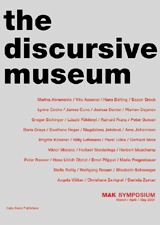 The Discursive Museum
The Discursive Museum
Published by Hatje Cantz.
Edited by Peter Noever. Interview with Vito Acconci by Hans Ulrich Obrist. Artists include: Marina Abramovic, Vito Acconci, Bazon Brock, Boris Groys, Magdalena Jetelova, Gerhard Merz .
PUBLISHER
Hatje Cantz
BOOK FORMAT
Paperback, 6.75 x 9.5 in. / 200 pgs / 20 bw
PUBLISHING STATUS
Pub Date 2/2/2002
Out of print
DISTRIBUTION
D.A.P. Exclusive
Catalog: SPRING 2002
PRODUCT DETAILS
ISBN 9783775711401 TRADE
List Price: $19.95 CAD $25.00
AVAILABILITY
Not available
STATUS: Out of print | 4/24/2004 For assistance locating a copy, please see our list of recommended out of print specialists |
 Democracy Unrealized
Democracy Unrealized
Documenta 11_Platform1
Published by Hatje Cantz.
Edited by Ute Meta Bauer, Mark Nash, Okwui Enwezor, Octavio Zaya. Contributions by Stefano Boeri, Susanne Ghez. Text by Carlos Basualdo, Marta Calsina, Isolde Charim, Gerald Eibegger, Michael Hardt, Elsa LÄpez, Robert Misik, Antonio Negri, Rudolf Scholten, Upendra Baxi, Homi Bhabha, Akeel Bilgrami, Iain Chambers, Zhiyuan Cui, Manuel De Landa, Enrique Dussel, Boris
PUBLISHER
Hatje Cantz
BOOK FORMAT
Paperback, 6.25 x 9 in. / 412 pgs / 24 color.
PUBLISHING STATUS
Pub Date 12/2/2002
Out of print
DISTRIBUTION
D.A.P. Exclusive
Catalog: SPRING 2003
PRODUCT DETAILS
ISBN 9783775790826 TRADE
List Price: $35.00 CAD $40.00
AVAILABILITY
Not available
STATUS: Out of print | 8/1/2007 For assistance locating a copy, please see our list of recommended out of print specialists |
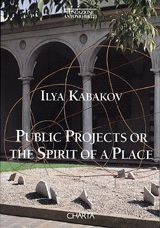 Ilya/Emilia Kabakov
Ilya/Emilia Kabakov
Public Projects
Published by Charta.
Contributors include Giairo Daghini, Anna Daneri, Emilia Kabakov, Boris Groys, Ilya Kabakov, Giacinto Pietrantonio, Angela Vettese.
PUBLISHER
Charta
BOOK FORMAT
Paperback, 5.75 x 8.25 in. / 160 pgs / 38 color / 26 bw.
PUBLISHING STATUS
Pub Date 8/2/2001
No longer our product
DISTRIBUTION
D.A.P. Exclusive
Catalog: SPRING 2001
PRODUCT DETAILS
ISBN 9788881583027 TRADE
List Price: $34.95 CAD $40.00
AVAILABILITY
Not available
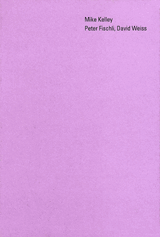 Mike Kelley - Peter Fischli, David Weiss
Mike Kelley - Peter Fischli, David Weiss
Published by Sammlung Goetz.
Essays by Bice Curiger, Patrick Frey, Boris Groys, Mike Kelley, Daniel Kothenschulte.
PUBLISHER
Sammlung Goetz
BOOK FORMAT
Hardcover, 7 x 9.75 in. / 135 pgs / 100 color / 3 bw.
PUBLISHING STATUS
Pub Date 1/2/2001
No longer our product
DISTRIBUTION
D.A.P. Exclusive
Catalog: SPRING 2001
PRODUCT DETAILS
ISBN 9783980526753 TRADE
List Price: $40.00 CAD $50.00
AVAILABILITY
Not available
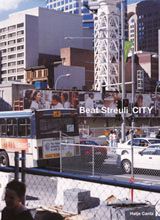 Beat Streuli
Beat Streuli
City
Published by Hatje Cantz.
Photographs by Beat Streuli. Edited by Bernhard Mendes Bürgi. Contributions by Rupert Pfab. Text by Boris Groys.
PUBLISHER
Hatje Cantz
BOOK FORMAT
Paperback, 7.6 x 11.2 in. / 208 pgs / 90 color.
PUBLISHING STATUS
Pub Date 10/2/1999
Out of print
DISTRIBUTION
D.A.P. Exclusive
Catalog: FALL 1999
PRODUCT DETAILS
ISBN 9783893229857 TRADE
List Price: $45.00 CAD $55.00
AVAILABILITY
Not available
STATUS: Out of print | 8/1/2007 For assistance locating a copy, please see our list of recommended out of print specialists |
